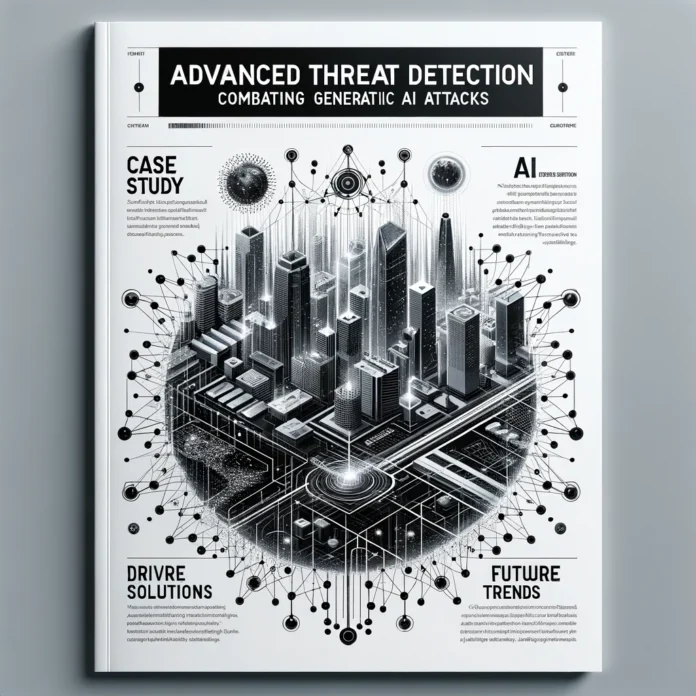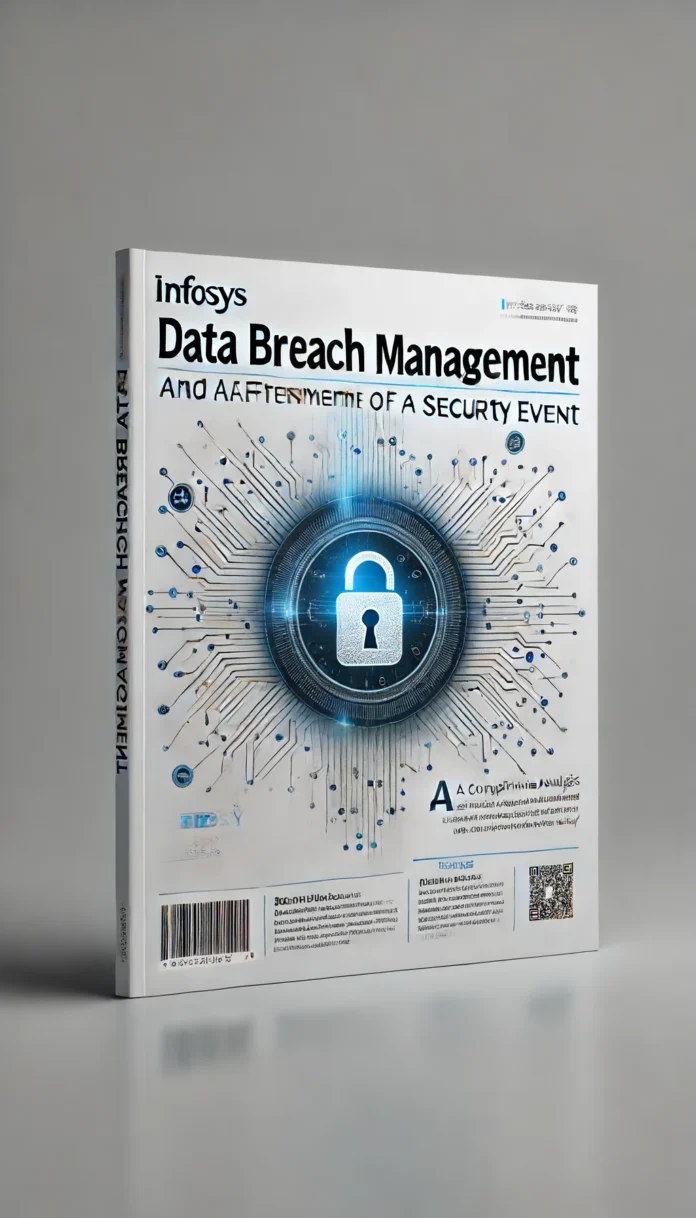Quantum computing represents a technological leap that could revolutionize numerous fields, from material science to artificial intelligence. However, with this advancement comes a severe threat to current encryption methods, potentially rendering them obsolete. If organizations fail to transition to quantum-resistant cryptographic algorithms, sensitive data could be exposed to unprecedented vulnerabilities. This article explores the imminent threat quantum computing poses to encryption, emphasizing the catastrophic risks of not transitioning in time, and provides a roadmap for organizations to safeguard their data and systems.
1. Understanding Quantum Computing
Quantum computing harnesses the principles of quantum mechanics to process information in fundamentally different ways compared to classical computing. While classical computers use bits as the smallest unit of data, quantum computers use quantum bits or qubits. Unlike bits, which can be either 0 or 1, qubits can exist in a state of superposition, allowing them to be both 0 and 1 simultaneously. This capability, coupled with entanglement (where qubits become interconnected such that the state of one instantly influences the state of another, regardless of distance), allows quantum computers to perform complex calculations at unprecedented speeds.
The Mechanics of Quantum Computing
At the core of quantum computing lies the ability to solve problems that are currently intractable for classical computers. For example, Shor’s algorithm, a quantum algorithm developed by mathematician Peter Shor, can factorize large numbers exponentially faster than the best-known classical algorithms. This poses a direct threat to public-key cryptosystems such as RSA, which rely on the difficulty of factorizing large numbers as their security foundation.
Current State of Quantum Computing
As of today, significant strides have been made in quantum computing. Leading tech companies like IBM, Google, and Microsoft are at the forefront of this research, with IBM’s Quantum Experience and Google’s Sycamore processor making headlines for their capabilities. Google, for instance, announced in 2019 that its quantum computer achieved quantum supremacy by performing a specific calculation faster than the fastest classical computer.
While practical, large-scale quantum computers are still in development, the progress indicates that it is only a matter of time before they become a reality. This looming advancement necessitates immediate and proactive measures to secure data against the potential threats posed by quantum computing.
Key Takeaways
- Quantum computing utilizes qubits and principles like superposition and entanglement to perform calculations at speeds unattainable by classical computers.
- Shor’s algorithm highlights the potential of quantum computers to break traditional encryption methods by factorizing large numbers rapidly.
- Current advancements by industry leaders signal that large-scale quantum computing is on the horizon, underscoring the urgency of developing quantum-resistant cryptographic algorithms.
Current Encryption Vulnerabilities
The encryption methods currently safeguarding our digital world are under significant threat from the advent of quantum computing. The most widely used cryptographic algorithms—RSA, Elliptic Curve Cryptography (ECC), and Advanced Encryption Standard (AES)—rely on mathematical problems that are virtually unsolvable by classical computers within a reasonable timeframe. However, quantum computers could potentially break these encryption methods swiftly, exposing sensitive data to malicious actors.
Overview of Existing Encryption Methods
- RSA (Rivest-Shamir-Adleman) Encryption:
- RSA is one of the most widely used public-key cryptosystems and is based on the difficulty of factorizing large composite numbers.
- Current RSA implementations typically use key sizes of 2048 or 4096 bits to ensure security. The larger the key size, the more computationally intensive it is to factorize the number.
- Elliptic Curve Cryptography (ECC):
- ECC is an approach to public-key cryptography based on the algebraic structure of elliptic curves over finite fields.
- It offers equivalent security to RSA with much smaller key sizes, making it more efficient in terms of computational overhead and storage requirements.
- Advanced Encryption Standard (AES):
- AES is a symmetric encryption algorithm widely used across the globe to secure data.
- It uses a single key for both encryption and decryption, with key sizes of 128, 192, or 256 bits, providing a high level of security for encrypted data.
Why These Methods Are at Risk
Quantum computing’s ability to perform complex calculations at unprecedented speeds threatens the core assumptions underpinning these encryption methods:
- Shor’s Algorithm and RSA/ECC:
- Shor’s algorithm can factorize large numbers and compute discrete logarithms efficiently, breaking the security of RSA and ECC.
- With a sufficiently powerful quantum computer, RSA encryption could be broken in polynomial time, rendering key sizes irrelevant.
- Grover’s Algorithm and AES:
- Grover’s algorithm can search unsorted databases in O(√N) time, effectively halving the security of symmetric key algorithms like AES.
- While Grover’s algorithm does not entirely break AES, it necessitates doubling the key size to maintain current security levels, leading to increased computational requirements.
Potential Consequences of Encryption Failure
The failure of these encryption methods could lead to severe and widespread repercussions:
- Exposure of Sensitive Data:
- Financial Information: Unauthorized access to bank accounts, credit card details, and transaction histories.
- Personal Data: Theft of personal identifiable information (PII), leading to identity theft and privacy breaches.
- Intellectual Property: Loss of proprietary business information and trade secrets.
- Increased Risk of Cyber-Attacks and Espionage:
- Nation-states and cybercriminals could exploit quantum computing to intercept and decrypt confidential communications, leading to espionage and strategic disadvantages.
- Loss of Trust in Digital Systems:
- Public and business confidence in digital transactions, communications, and overall cybersecurity could be severely undermined.
- Organizations might face significant legal and regulatory repercussions due to data breaches and failure to protect sensitive information.
Key Takeaways
- RSA and ECC are highly vulnerable to quantum computing attacks due to Shor’s algorithm’s ability to factorize large numbers and compute discrete logarithms.
- AES is at risk of reduced security strength due to Grover’s algorithm, necessitating larger key sizes for maintaining security.
- Consequences of encryption failure include exposure of sensitive data, increased cyber-attack risks, and loss of trust in digital systems, emphasizing the urgency of transitioning to quantum-resistant cryptographic algorithms.
The Catastrophic Risks of Not Transitioning
The failure to transition to quantum-resistant cryptographic algorithms poses catastrophic risks to organizations. The implications of such a failure extend beyond technical and operational challenges, encompassing financial losses, reputational damage, and regulatory repercussions. Understanding these risks underscores the urgency for organizations to act proactively.
Detailed Analysis of the Risks
- Data Breaches and Financial Losses:
- Quantum computing could allow adversaries to decrypt sensitive data, leading to massive data breaches.
- Organizations could face substantial financial penalties due to breaches, including fines from regulatory bodies and costs associated with breach mitigation and response.
- Loss of proprietary information could impact competitive advantage and market position.
- Legal and Regulatory Repercussions:
- Regulatory frameworks such as GDPR, HIPAA, and CCPA mandate strict data protection measures. Failure to comply due to inadequate encryption could result in hefty fines and legal actions.
- Non-compliance could lead to suspension of business operations, especially in highly regulated sectors like finance and healthcare.
- Damage to Organizational Reputation and Customer Trust:
- Publicly disclosed data breaches can severely damage an organization’s reputation.
- Loss of customer trust can result in decreased customer loyalty, loss of business, and long-term brand damage.
- Rebuilding trust after a breach is costly and time-consuming, often requiring extensive PR efforts and customer incentives.
Examples of Sectors Most at Risk
- Financial Sector:
- Financial institutions hold vast amounts of sensitive data, including personal and financial information.
- Quantum-enabled attacks on encryption could lead to unauthorized transactions, theft of funds, and exposure of customer data.
- Healthcare Sector:
- Healthcare organizations store sensitive patient data, including medical histories and personal information.
- Breaches could compromise patient privacy, lead to identity theft, and affect patient care.
- Government and Critical Infrastructure:
- Government agencies and critical infrastructure providers manage confidential national security information and essential services data.
- Quantum attacks could disrupt national security operations, compromise confidential communications, and impact critical services.
Case Studies of Organizations Suffering Due to Delayed Technological Adaptation
- Example 1: Financial Institution Breach:
- A leading financial institution delayed upgrading its encryption methods, resulting in a significant breach where sensitive customer information was exposed.
- The breach led to regulatory fines, lawsuits, and a substantial drop in stock value.
- Example 2: Healthcare Data Compromise:
- A major healthcare provider experienced a breach due to outdated encryption protocols, compromising patient data.
- The organization faced legal actions, loss of patient trust, and increased scrutiny from regulatory bodies.
Key Takeaways
- Financial losses from data breaches and regulatory fines can be substantial and long-lasting.
- Legal and regulatory repercussions include fines, legal actions, and operational suspensions for non-compliance.
- Reputational damage from breaches leads to loss of customer trust, decreased business, and costly recovery efforts.
- Sectors most at risk include finance, healthcare, government, and critical infrastructure, highlighting the need for urgent action.
Implementation Challenges
Transitioning to quantum-resistant cryptographic algorithms is a complex and multifaceted process. Organizations face numerous technical and organizational hurdles that can impede this transition. Failure to overcome these challenges could leave systems vulnerable to quantum-enabled attacks, exacerbating the risks outlined previously.
Technical Hurdles
- Compatibility with Existing Systems:
- Quantum-resistant algorithms need to be integrated into existing IT infrastructure without disrupting operations.
- Ensuring backward compatibility and seamless integration can be technically challenging, especially for legacy systems.
- Computational Overhead and Performance Concerns:
- Quantum-resistant algorithms often require more computational resources compared to traditional algorithms.
- Increased computational overhead can lead to performance degradation, impacting the efficiency of systems and applications.
- Organizations must balance security enhancements with maintaining optimal system performance.
- Complexity of Key Management:
- Implementing quantum-resistant cryptographic methods involves managing larger and more complex keys.
- Effective key management practices are essential to maintain security, but they add layers of complexity to the overall cryptographic system.
- Poor key management can lead to vulnerabilities and potential breaches.
Organizational Challenges
- Lack of Skilled Personnel:
- Quantum-resistant cryptography is a specialized field requiring advanced knowledge and skills.
- The shortage of skilled professionals can hinder the adoption and implementation of these advanced cryptographic methods.
- Organizations may need to invest in training and hiring experts to build a capable workforce.
- Financial Constraints:
- Transitioning to quantum-resistant algorithms can be costly, involving investments in new technologies, system upgrades, and training programs.
- Budget limitations may delay or prevent organizations from making necessary transitions, increasing their vulnerability to quantum threats.
- Resistance to Change and Organizational Inertia:
- Organizational culture and resistance to change can impede the adoption of new technologies.
- Employees and decision-makers may be reluctant to embrace quantum-resistant cryptographic methods due to perceived complexities and uncertainties.
- Overcoming this resistance requires strong leadership, clear communication, and change management strategies.
Risks of Not Overcoming These Challenges
- Increased Vulnerability to Quantum Attacks:
- Failure to address technical and organizational challenges can leave systems exposed to quantum-enabled breaches.
- Organizations may face significant security risks if they cannot effectively implement quantum-resistant algorithms.
- Operational Disruptions:
- Poorly managed transitions can lead to operational disruptions, affecting business continuity and service delivery.
- Ensuring a smooth transition is critical to maintaining operational stability while enhancing security.
- Long-Term Strategic Disadvantages:
- Organizations that fail to adopt quantum-resistant methods may fall behind competitors who proactively enhance their security.
- Maintaining outdated cryptographic systems can result in long-term strategic disadvantages, including loss of market share and reputation.
Key Takeaways
- Compatibility and performance issues need careful management to avoid operational disruptions during the transition to quantum-resistant algorithms.
- Key management complexity requires robust practices to maintain security.
- Skilled personnel are essential for effective implementation, and organizations must address skill shortages through training and hiring.
- Financial constraints and resistance to change are significant barriers that need strategic planning and leadership to overcome.
- Failing to overcome challenges can lead to increased vulnerability, operational disruptions, and strategic disadvantages.
Case Studies of Inadequate Preparation
The following case studies illustrate the severe consequences that organizations face when they fail to adequately prepare for the transition to quantum-resistant cryptographic methods. These examples highlight the importance of proactive measures and thorough preparation to avoid significant data breaches and other security failures.
Case Study 1: Financial Institution Breach
Background: A major financial institution, known for its extensive client base and wide range of financial services, faced a severe data breach due to inadequate encryption measures.
Incident: The institution had been using outdated RSA encryption with insufficient key sizes, making it vulnerable to advanced cryptographic attacks. Despite warnings from cybersecurity experts, the institution delayed upgrading its encryption methods due to concerns over cost and potential operational disruptions.
Consequences:
- Data Breach: Hackers exploited the weak encryption, gaining access to sensitive financial data, including account details, transaction histories, and personal information of millions of clients.
- Financial Losses: The breach resulted in significant financial losses, including regulatory fines, legal fees, and compensation to affected clients. The institution faced an estimated loss of over $500 million.
- Reputation Damage: The breach severely damaged the institution’s reputation, leading to a loss of client trust and a significant decline in stock value. Rebuilding trust required extensive public relations efforts and increased investment in cybersecurity.
Lessons Learned:
- Proactive upgrades to encryption methods are essential to mitigate risks.
- Cost concerns should not outweigh the critical need for robust security measures.
- Regular risk assessments and timely responses to security advisories can prevent breaches.
Case Study 2: Healthcare Data Compromise
Background: A large healthcare provider storing extensive patient data experienced a significant data breach due to inadequate preparation for quantum threats.
Incident: The healthcare provider relied on outdated cryptographic protocols that were vulnerable to potential quantum attacks. Despite the increasing threat landscape, the organization postponed implementing quantum-resistant algorithms due to budget constraints and a lack of skilled personnel.
Consequences:
- Data Compromise: Hackers accessed and decrypted patient records, including medical histories, personal identification information, and insurance details. The breach affected millions of patients.
- Legal and Regulatory Repercussions: The provider faced multiple lawsuits and regulatory fines for failing to protect patient data adequately. Compliance failures under HIPAA regulations led to substantial penalties.
- Operational Impact: The breach disrupted healthcare services, leading to delays in patient care and treatment. The organization had to invest heavily in breach mitigation and system upgrades.
Lessons Learned:
- Budget constraints should not compromise data security; investing in cybersecurity is essential.
- Skilled personnel are critical for implementing and maintaining advanced cryptographic methods.
- Regular updates and adherence to regulatory standards can mitigate risks and ensure compliance.
Key Takeaways
- Inadequate preparation and outdated encryption methods can lead to severe data breaches, financial losses, and reputational damage.
- Proactive measures and timely upgrades to cryptographic protocols are crucial to safeguard sensitive data.
- Investing in cybersecurity and skilled personnel is essential to address emerging threats and ensure robust data protection.
- Compliance with regulatory standards and regular risk assessments can prevent significant security failures and legal repercussions.
6. Lack of Standards
The absence of standardized quantum-resistant cryptographic methods presents a significant risk to global cybersecurity. Without clear and widely accepted standards, organizations face uncertainty in selecting and implementing appropriate cryptographic measures. This section explores the current state of quantum-resistant cryptographic standards, the efforts being made to establish these standards, and the associated risks if standardization is not achieved promptly.
Current State of Quantum-Resistant Cryptographic Standards
- Development Efforts:
- Organizations such as the National Institute of Standards and Technology (NIST) are leading efforts to develop and standardize quantum-resistant cryptographic algorithms.
- NIST’s Post-Quantum Cryptography Standardization Project is in its third round of evaluation, working to identify and standardize algorithms that can resist quantum attacks.
- Global Collaboration:
- Collaboration among international bodies, including the European Telecommunications Standards Institute (ETSI) and the International Organization for Standardization (ISO), is essential to harmonize efforts and establish globally accepted standards.
- Cross-industry collaboration is also crucial, involving stakeholders from finance, healthcare, government, and technology sectors to ensure comprehensive and practical standards.
- Current Algorithms Under Consideration:
- Various algorithms are being evaluated for their quantum resistance, including lattice-based cryptography, hash-based cryptography, code-based cryptography, and multivariate polynomial cryptography.
- These algorithms are undergoing rigorous testing for security, performance, and implementation feasibility.
Risks Associated with the Absence of Standardized Methods
- Inconsistent Protection Levels:
- Without standardized methods, organizations may adopt different quantum-resistant algorithms, leading to inconsistent levels of protection across sectors and regions.
- This inconsistency can create vulnerabilities, as weaker implementations may become targets for quantum-enabled attacks.
- Increased Complexity and Potential for Errors:
- The lack of standards can lead to increased complexity in cryptographic implementations, as organizations attempt to navigate the uncertainty and choose the best algorithms independently.
- This complexity increases the potential for implementation errors, which can introduce vulnerabilities and compromise security.
- Interoperability Issues:
- Different organizations adopting different quantum-resistant algorithms can lead to interoperability issues, complicating secure communication and data exchange.
- Standardization ensures that systems and devices from different organizations and regions can communicate securely and effectively.
- Delayed Adoption:
- The absence of clear standards can result in delayed adoption of quantum-resistant cryptographic methods, as organizations may hesitate to invest in technologies that are not yet universally accepted.
- Delayed adoption increases the window of vulnerability during which sensitive data remains at risk of quantum attacks.
Key Takeaways
- Standardization efforts by organizations like NIST are crucial to developing universally accepted quantum-resistant cryptographic algorithms.
- Global collaboration is essential to harmonize standards and ensure comprehensive protection across sectors and regions.
- Inconsistent protection levels, increased complexity, interoperability issues, and delayed adoption are significant risks associated with the lack of standardized methods.
- Proactive engagement in standardization efforts and early adoption of emerging standards can help mitigate these risks and enhance global cybersecurity.
7. Roadmap to Quantum-Resistant Security
Transitioning to quantum-resistant cryptographic methods is a critical step for organizations aiming to secure their data against future quantum-enabled threats. This section provides a comprehensive roadmap, detailing the steps organizations should take to prepare for the quantum era, ensuring a smooth and effective transition.
Steps Organizations Can Take to Prepare
- Conducting Risk Assessments:
- Perform a thorough risk assessment to identify critical assets and data that require protection.
- Evaluate the potential impact of quantum computing on existing encryption methods and determine the urgency of transitioning.
- Investing in Research and Development:
- Allocate resources to research and development (R&D) of quantum-resistant cryptographic algorithms.
- Collaborate with academic institutions, industry consortia, and cybersecurity experts to stay updated on the latest advancements and best practices.
- Collaborating with Industry Peers:
- Participate in industry groups and standardization efforts to contribute to and benefit from collective knowledge and progress.
- Engage in information-sharing initiatives to learn from the experiences of other organizations and adopt proven strategies.
- Phased Implementation and Pilot Testing:
- Develop a phased implementation plan to gradually transition to quantum-resistant algorithms, minimizing disruptions.
- Conduct pilot tests in controlled environments to evaluate the performance and compatibility of new cryptographic methods.
- Use the results of pilot tests to refine and optimize the implementation strategy.
- Training and Awareness Programs:
- Implement comprehensive training programs to equip staff with the necessary skills and knowledge for managing quantum-resistant cryptography.
- Raise awareness about the importance of quantum security among all employees, emphasizing their roles in maintaining robust security practices.
- Regular Reviews and Updates:
- Establish a routine schedule for reviewing and updating cryptographic policies and procedures to ensure they remain effective against emerging threats.
- Monitor advancements in quantum computing and cryptography to adapt security measures proactively.
Best Practices for a Smooth Transition
- Strong Leadership and Governance:
- Ensure strong leadership and governance to drive the transition, with clear accountability and decision-making processes.
- Establish a dedicated team or task force to oversee the transition, coordinate efforts, and manage resources effectively.
- Comprehensive Change Management:
- Develop and implement a change management strategy to address resistance to change and ensure organizational buy-in.
- Communicate the benefits and necessity of the transition clearly and consistently to all stakeholders.
- Resource Allocation and Budgeting:
- Allocate sufficient resources and budget for the transition, considering the costs of new technologies, training, and potential operational disruptions.
- Plan for contingencies and potential challenges to avoid delays and ensure smooth implementation.
- Compliance and Regulatory Alignment:
- Ensure that the transition aligns with relevant compliance requirements and regulatory standards.
- Engage with regulators and compliance bodies to stay informed about emerging standards and requirements for quantum-resistant security.
Key Takeaways
- Conducting risk assessments helps identify critical assets and evaluate the urgency of transitioning to quantum-resistant cryptographic methods.
- Investing in R&D and collaborating with industry peers ensures organizations stay updated on advancements and best practices.
- Phased implementation and pilot testing enable gradual transitions, minimizing disruptions and optimizing performance.
- Training programs and awareness initiatives equip staff with necessary skills and emphasize the importance of quantum security.
- Regular reviews, strong leadership, and comprehensive change management ensure smooth and effective implementation.
- Resource allocation and compliance alignment are crucial for a successful transition, mitigating risks and ensuring adherence to regulatory standards.
By following this roadmap, organizations can proactively prepare for the quantum era, safeguarding their data and systems against future threats. In the final section, we will summarize the key insights and emphasize the urgency of taking immediate action to secure against quantum-enabled vulnerabilities.





